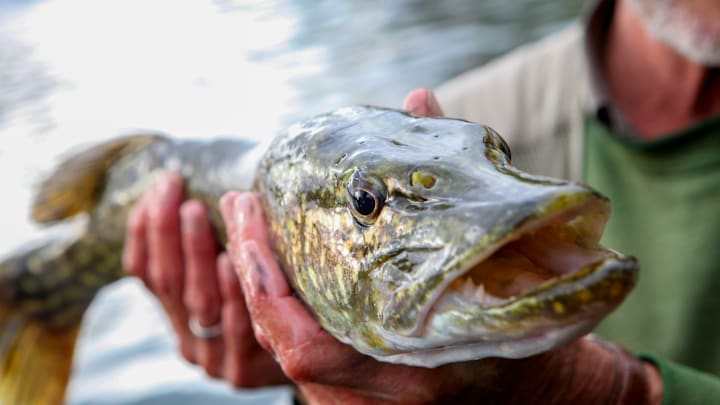Northern Pike Threatening New Freshwater Habitats in Alaska: Secret Ocean Pathways Revealed

Northern Pike in Alaska: A Growing Invasive Threat
Northern Pike, previously believed to be restricted to freshwater, are now using brackish estuarine pathways to invade new habitats where salmon had previously been the top-level predator. This is creating new challenges for conservationists and resource managers across Southcentral Alaska.
Northern Pike are a native species in Interior and Western Alaska, but were illegally introduced to the Susitna River basin at some point in the 1950s. Since then, the predatory fish has become established in more than 150 lakes and rivers in the region.

Otolith Analysis Reveals Pike Migration Through Cook Inlet
For years, scientists believed Cook Inlet’s saltwater served as a natural barrier against Northern Pike spread. However, groundbreaking research using otoliths—the intricate ear bones of fish, which serve as natural archives, capturing the chemical fingerprints of the waters a fish has inhabited—has revealed these predators are crossing saltwater estuaries to infiltrate new lakes and river systems.
“Strontium varies according to geology and location,” according to UAF fisheries professor and the study’s lead author, Matthew Wooller. “If pike are moving between watersheds, you can pick it up by analyzing strontium in the otoliths.”
Findings indicate Northern Pike have migrated through Cook Inlet to establish populations in areas like Vogel Lake, Campbell Lake, and Westchester Lagoon.

Alaska’s Native Fish at Risk From Northern Pike Predation
Northern Pike’s presence in remote systems like Vogel Lake and Campbell Lake poses a real threat to native salmon and trout populations. The implications are staggering. Northern Pike have already overtaken native fish populations in over 150 lakes and rivers. Their newfound ability to traverse saltwater dramatically expands their range, increasing the risk of re-invasion in habitats previously cleared of the species.
Management Efforts to Contain Northern Pike Spread
Efforts to contain the spread are underway. In 2021, Alaska’s Department of Fish and Game (ADFG) eradicated Northern Pike from the Miller Creek drainage and installed fish weirs to prevent their return. Meanwhile, scientists are mapping salinity levels in Cook Inlet and conducting controlled experiments to understand Pike’s tolerance to saltwater. Genetic studies are also exploring whether these fish are adapting to saline environments.

Urgent Need for Proactive Conservation Strategies
Understanding Northern Pike’s adaptability and targeting high-risk areas are critical to protecting Alaska’s freshwater ecosystems.
“The realization that Northern Pike can move through estuarine pathways forces us to rethink how we approach invasive species management,” said Peter Westley, a fisheries professor. “If left unchecked, these fish could wreak havoc on Alaska’s fragile freshwater ecosystems.”
Future Research to Combat Northern Pike Invasion
By understanding Northern Pike’s migration patterns and addressing high-risk areas, resource managers hope to protect native species and mitigate the long-term impact of this formidable invader. But time is of the essence. Alaska’s waterways depend on swift, decisive action to preserve their ecological balance.
READ NEXT:
Winter Pike Spearing: Hunting Through the Ice

How to Pickle Northern Pike: A Traditional Recipe for Ice Fishing Enthusiasts


Kurt Mazurek writes about all things fishing and the outdoor lifestyle for Fishing On SI -a division of Sports Illustrated. Before writing On SI he enjoyed a successful career in the fishing industry, developing marketing campaigns and creative content for many of the sport’s most recognizable brands. He is a dedicated husband and father, an enthusiastic bass tournament competitor, YouTuber, photographer, musician, and author of the novel "Personal Best: fishing and life”.